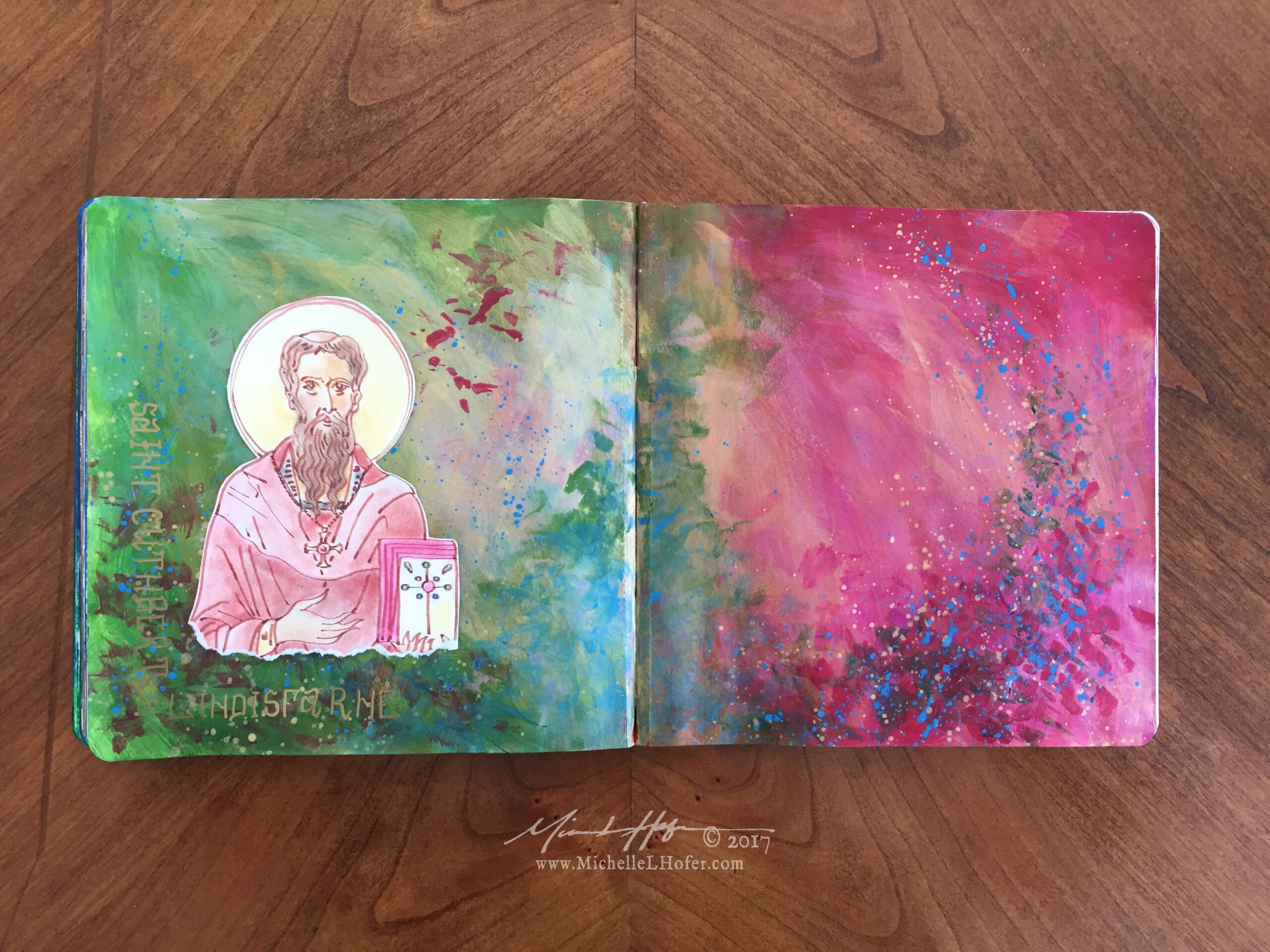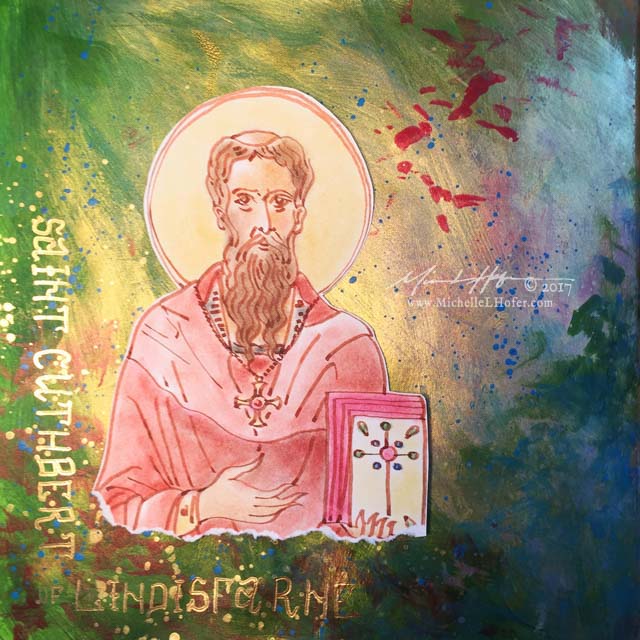Saint Cuthbert of Lindisfarne

In December of 1539, under the direction of King Henry the 8th, the tomb of a Christian saint named Cuthbert at Durham was to be destroyed and it’s wealth taken for the crown of England. The three men sent to accomplish the act opened the tomb to find the usual bounty of gems and ornaments. They then smashed the wooden inner chest thought to contain the bones of the saint and found something entirely unexpected. Rather than bones, the intact body of the man lay in the box wearing robes free of stain and decay. Perhaps spooked with what they found, this tomb and it’s contents were left behind and did not receive the usual treatment: the burning of the bones and looting of the precious items. Is it possible that this account is true? Did the body of Cuthbert remain whole for 850 years after his death (taken to be a sign of person who had grown very close to God)? I certainly can’t answer that. But it’s the story maintained today by historians at England’s Durham University and Durham Cathedral, the place where Cuthbert’s remains came to rest having been carried by fleeing monks from the Island of Lindisfarne following a Viking raid.
Cuthbert was said to have been devoted to God from an early age. Like Patrick, he spent time during his youth tending sheep and growing in faith. At the age of 17 he joined the Celtic monastery at Melrose in Scotland and his fellow monks soon noted his depth of devotion, humility, gentleness, and service. Later he became abbot (the leader of the monastery at Melrose) and began missionary work in the areas surrounding the monastery. English historian, Bede, recounts these journeys:
Cuthbert was wont to preach in those villages that were far away on steep and rugged mountainsides, which others dreaded to visit and whose poverty as well as ignorance prevented teachers from approaching them. He would often not return home for a whole week, sometimes, even for two or three weeks, and even occasionally for a full month, but he would tarry in the mountains, summoning the rustic to heavenly things. – Bede
He later moved to the Island of Lindisfarne and continued his missionary ventures from there, again esteemed to be wise and devout by his fellow monks.
Like many of the Celtic Christian early church leaders, Cuthbert was said to possess both prophetic and healing gifts. He would later be called the “Wonder-worker of England.” He ministered to the poor and the wealthy alike tending to their needs for physical, mental and spiritual healing. He preached and healed without fear in one of England’s most violent and plague-ridden times when many rulers maintained a throne for 10 years or less. He too sought solitude as often as possible and was served by wild creatures. A young monk, wishing to know why Cuthbert never lay in his bed at night, followed him one evening to observe his practice of spending the entire night singing the psalms while submerged in the frigid water of the sea. At dawn, the monk reports, in emerging out of the water, a pair of otters dried and warmed Cuthbert’s feet and departed when he gave them a blessing.
The early Celtic Christian monasteries placed great value on the praise, honesty, and wisdom of the Psalms. Many of them memorized the books entirety, committing it to memory and thus giving themselves an internal volume of praise and prayer. Many communities had daily readings of two Psalms in particular: Psalm 148 and Psalm 150. Perhaps as a child you, like many committed these words of Scripture to memory also:
Psalm 150
Let All Things Praise the Lord
Praise the Lord!
Praise God in His sanctuary;
Praise Him in His mighty firmament!
2 Praise Him for His mighty acts;
Praise Him according to His excellent greatness!
3 Praise Him with the sound of the trumpet;
Praise Him with the lute and harp!
4 Praise Him with the timbrel and dance;
Praise Him with stringed instruments and flutes!
5 Praise Him with loud cymbals;
Praise Him with clashing cymbals!
6 Let everything that has breath praise the Lord.
Praise the Lord!
Book of Saints Project
An ONGOING MODERN RECORD of CHRIST FOLLOWERS THROUGHOUT THE AGES


